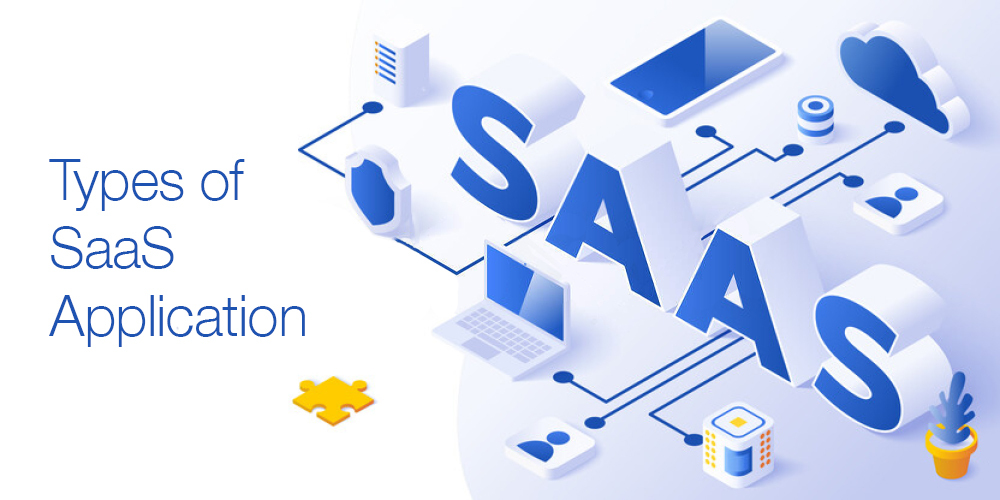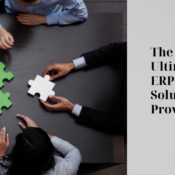08/14/2021
/
Necessary Steps To Develop Successful SaaS Application
SaaS is an on-demand, cloud-based software delivery model that resides on a remote cloud network and allows users to access the vendor’s cloud-based software through the web or an API. Building Saas Application is the need of the hour for a business willing to implement an innovative business process to improve the customer experience.
Ever used Salesforce, Microsoft Office 365, Google Apps, Amazon Web Services, MailChimp, Slack, or Hubspot? These are prime examples of SaaS (Software as a Service) applications. All these applications have brought revolutionary change to digital businesses. A report says that the SaaS market will touch the milestone of $100 billion by 2025, progressing at a CAGR of 12.5%.
Every industry, including IT, Finance, Marketing, Human resources, etc. needs a ready-to-use SaaS app that can be deployed using the least IT resources. These apps are cost-effective, faster, and scalable and are designed to protect data.


What is SaaS?
Software as a Service (SaaS) is one of the three main categories of cloud computing; the other two are Infrastructure as a Service (IaaS) and Platform as a Service (PaaS). It’s an alternative to conventional models that require on-premises software installation, server configuration and deployment. The working of the SaaS model is simple and approachable by the business of all size and scale. SaaS is an on-demand, cloud-based software delivery model that resides on a remote cloud network and allows users to access the vendor’s cloud-based software through the web or an ASP.Working of Saas Model
The working Saas Model is based on a cloud delivery model, wherein, a cloud service provider hosts applications or software, which can be accessed by end-users. This host may work as a third-party cloud provider, who owns servers, networking, databases, and computing resources to develop and maintain the software, ensure automatic software update regularly, and makes it available to its customers on the Internet. Payments can be made on a pay-as-you-go basis at a predictable total cost. The SaaS model is convenient and easy to deploy, scale, and upgrade business solutions. The use of SaaS applications eliminates tasks such as software setup and maintenance and reduces the upfront cost dramatically. Users can access these services by simply paying an affordable subscription fee to access ready-to-use software. It works like a fully furnished rental property and can be used for the time period.SaaS Platform Architecture
SaaS applications and services run on a single-instance, multi-tenant architectural approach to provide a feature-rich experience to all subscribed customers and cloud tenants. It offers a unified application platform running on a single version and configuration for all tenants and customers. The data the customers provide will be bifurcated individually, even though they share a common platform and infrastructure. Now, the best thing about the multi-tenant architecture of SaaS applications is that it allows a larger group to access the same pool of wide resources available in the same hosted environment, while shared instances take care of all necessary changes for all customers that can be made in one go. It allows the cloud service provider to manage, maintain, update and fix bugs faster than usual by providing dedicated space for secure storage to every user.Key Features of SaaS System

- Multi-Tenancy Model
- Automated Provisioning
- Single Sign-On
- Speedy Deployment Process
- Subscription-Based Payment Model
- High Availability & Accessibility anytime, anywhere
- Flexible Infrastructure.
- Updated Software Version
- High Data and Application Security
Integration of SaaS Application
Saas has the power to dominate the technology stacks of an organization. First, connect a SaaS application with the cloud-based application or on-premise software via APIS to let it require and share data on the cloud or on-premise system. It is a big time saver and renders transparency to help you improve your employee and customer experience.Development Cost of SaaS Application
By rendering your tech stack with end-to-end automation, you can transform how your business operates, and this makes adopting a SaaS platform worth it. As far as the development cost is concerned, Cloud-based software is mainstream, and the total expenses will include the development of a marketable along with its timely maintenance. The cost to develop SaaS Applications ranges from $15-100k. However, prices vary from country to country, company to company and type of SaaS application. Today, business demands to be more transformative and agile, and this makes the adoption of SaaS a growth strategy.Type of SaaS Application

- E-Commerce Software
- Vertical SaaS
- Project Management Software
- Billing Software
- Customer Relationship Management Software (CRM)
- Enterprise Resource Planning Software (ERP)
- Collaboration Software
Steps To Develop a Successful SaaS Application
Step- 1 Market Analysis
Commencing with good market research reflects your preparation to understand the market needs and competitor approaches. Analyze market segments to validate the worth of SaaS products that you have in mind.- Find your target audience
- Understand their needs and requests
- Know competitor strategies, features and business models
Step-2 Chart out Business Plan
Formulating an effective business plan will help you figure out what milestones you need to cover and how. To develop a software-as-a-service product, you should know how to build it.- What distinguishes your product from competitors?
- Discover the customer’s pain points and find a way to solve them.
- What will be your marketing strategy to reach a potential audience?
Step-3 Discuss Requirements of SaaS Application
Customization, integration and security are what make every SaaS product different. SaaS cloud computing should be deployed with a wide variety of features with necessary core functionalities.- Will the SaaS product handle increase in no. of users without slowing down?
- Does it support multi-tenancy and self-service provisioning?
- What does the SaaS product offer to its customers?
- What will be the basic core features to deliver value to your customers?
Step-4 Choose Technical Stack
You may need to use a list of tools, frameworks and programming languages to develop software that may have relevance in today’s time. With a wide variety to choose from, the options are umpteen. Determining the technology stack depends on the business type - backend, frontend, database, SaaS Hosting Provider.Step-5 Pricing Model of SaaS Application
SaaS solutions come with different pricing models that will enhance your product's popularity. Though SaaS comes on a pay-as-you-go basis, but the pricing should be manageable for customers. Adjust the payment model as per the needs of your targeted audience to attract more. Offer payment options based on usage, features, active users, flat rate, etc. Companies offer free trials, promotional prices or initially low prices. After doing all this, you can either find a team to outsource SaaS development, or you can create a team of your own. If you still have queries, reach out to us. We are a SaaS Development Company in India that can assist you throughout SaaS application development.Recent Posts
Monika Narriya/0 Comments
Why are ERP solutions important in the education sector?
Monika Narriya/0 Comments
Which is the best ERP solution provider company?
Monika Narriya/0 Comments
How do we select the right ERP solution for our businesses?
Sumit Kumar/0 Comments
9 Most In-Demand Programming Languages for 2024
Sumit Kumar/0 Comments
Best Time to Post on Social Media – 2024 Guide
Sumit Kumar/0 Comments
Why You Should Consider Semantic HTML for SEO
All Categories
- Bing
- Blockchain
- Blog
- Branding
- Case Study
- Content Marketing
- Conversion Rate Optimization
- Cryptocurrency
- Digital Currency
- Digital Marketing
- Email Marketing
- ERP Solutions
- Facebook Marketing
- Google Ads
- Google Updates
- Graphic Designing
- Hire Developers
- Image SEO
- Influencer Marketing
- IT
- Local SEO
- Machine Learning
- Mobile Application Development
- Pay Per Click
- Pinterest SEO
- Podcast Hosting
- React JS
- Reddit & Quora
- Search Engine Optimization
- SEO Copywriting
- Social Media Marketing
- Software
- Software Development
- Technology
- UX and UI
- Web Designs
- Web Hosting
- Website Development
- Website Redesigning
- YouTube SEO








